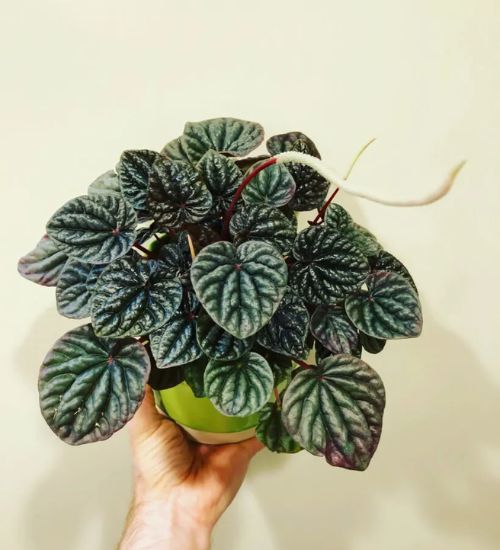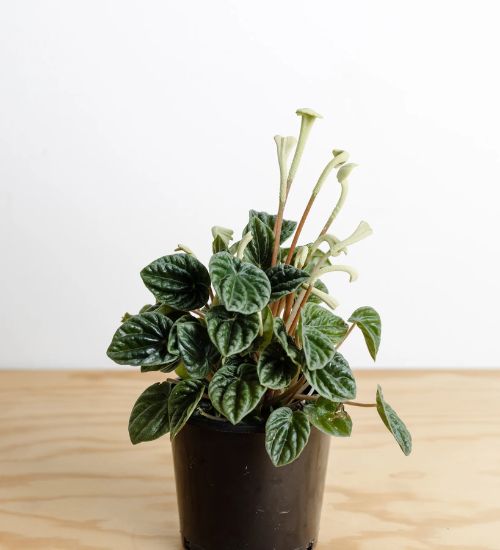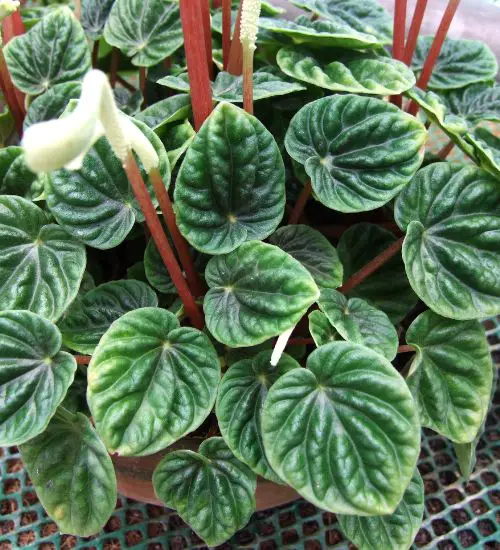Sun: Bright indoor light
Water: Typical water needs for a succulent
Temperature: Zone 11a from 40° F to 45° F (4.4 ° C to 7.2° C) to Zone 12b from 55° F to 60° F (12.8° C to 15.6° C)
Winter Survival: Not cold hardy
Propagation: leaves, stem cuttings, division
Flower: in the summer and fall
Flower Type: white
Toxic: Generally non-toxic to humans and animals
Dormant: winter
Space Requirement: Indoors
Common Problems: Plants may rot if overwatered, pests
Where to buy Peperomia Caperata?
Basc Care for Peperomia Caperata
Watering
Regular watering period should be every 2 weeks
You can water your succulent more than often in extreme conditions but make sure that the soil is completely dry before watering your succulent again.
Fertilizing
Only feed this succulent during its active growing seasons which means winter. Use the right fertilizer applied in the right amounts. Applying half-strength balanced fertilizer every month or so is recommended for optimal results.
Do not fertilize during winter as the plant is dormant.
Sun & Location Requirements for "emerald ripple, peperomia"
Peperomia Caperata needs lots of sunshine! An ideal spot is near a window that gets direct sun for a few hours every day. If you don’t have natural sunlight indoors, consider investing in an LED grow-light to provide enough light for "emerald ripple, peperomia" to stay healthy and vibrant.
Peperomia Caperata is not cold hardy and does not survive in freezing conditions. However, there are certain strategies that can be used to help the plant thrive despite the chill of winter. Proper drainage and insulation are essential for succulent X during periods of extreme cold. Placing a layer of mulch or gravel on the soil around the plant can also help keep it warm.
Any succulents in the group will only need minimal space to grow. You can place your pot at your table or window. Outdoors is also a nice idea to put your pot.
Peperomia Caperata also benefits from some indirect light throughout the day as well, so make sure you give it enough space to soak up light without becoming too exposed to heat.
Propagation
Propagating succulents with leaves is a satisfying way to obtain new plants. Start by cutting some healthy leaves from the mother plant, then place them on top of potting mix and water regularly. In time you'll have vibrant succulents that you grew yourself!
Propagating Peperomia Caperata by stem cuttings is a simple process that requires very few supplies. Start by selecting healthy stems from existing plants that are at least two inches long and have several leaves attached.
Toxicity

Peperomia Caperata is generally non-toxic to humans and animals. However, the plant may contain certain toxins which can cause mild skin irritation if it is ingested or comes in contact with skin. Therefore, it is important to keep the plant away from children and pets for safety reasons.
Pests and Diseases
Peperomia Caperata can be affected common pests and diseases like most of the other succulents such as mealybugs, scale insects, and Red spider mites.
If you do spot any of pest signs, you can treat your succulent using below methods.
- Mealybugs: quarantine, clean infected plants, soapy water.
- Scale insects: quarantine, clean infected plants, soapy water.
- Red spider mites: Quarantine, clean your infected plants, treatment with a systemic insecticidal/soapy water.
Besides that, to prevent serious health issues from happening, keep your succulent in a well-ventilated area and check it regularly for any signs of pests or health problems.


